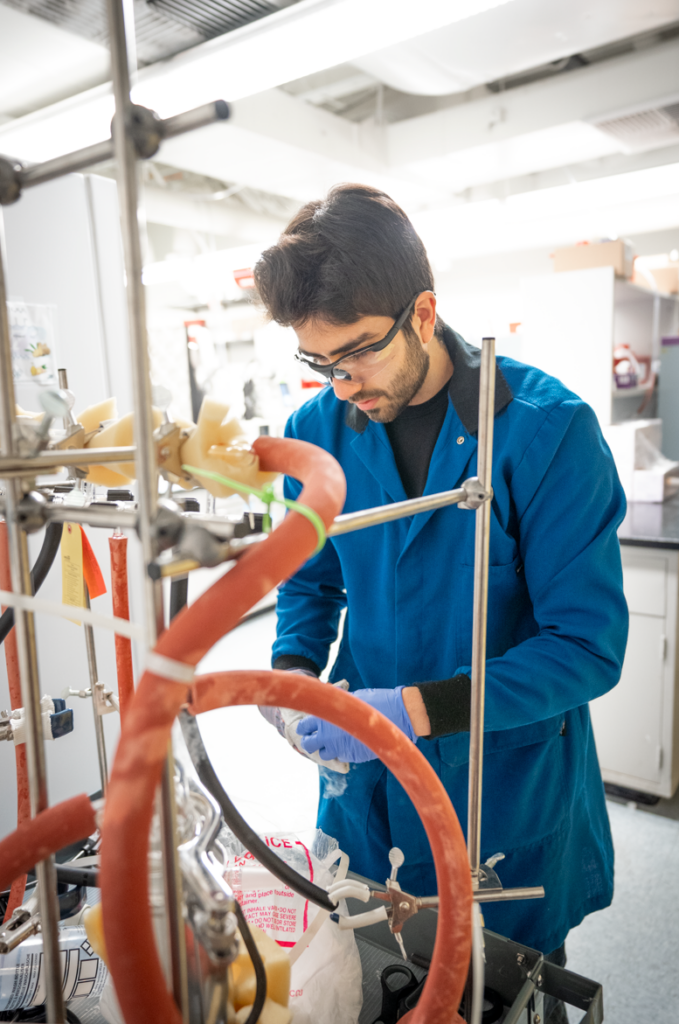
Established in 2022, the Medicinal Chemistry core plays a crucial role in the drug discovery process through the selection and synthesis of compounds that establish structure–activity relationships and achieve efficacy and safety in preclinical animal testing. We provide synthetic chemistry resources, which is an essential cross-cutting platform to support a robust drug discovery research program.
Our goal is to assist USC investigators in all aspects of small molecule drug discovery and development process, including target validation, lead optimization using advanced machine learning software, tool compound custom synthesis, small scale and multi-gram scale synthesis and purification, structural determination, purity analysis, and provides support with ADMET, In Vivo-PK/PD studies, as well as with In Vivo Safety Pharmacology.
Mission
Medicinal Chemistry Core mission is to provide support to all faculty and students in their synthetic organic/medicinal chemistry needs while assisting the larger scientific community of experts who partner with the core. MedChem Core offers advanced technology and equipment including machine learning software, reaction microwave, combi flash, and reverse phase prep purification systems to aid drug design, target validation, hit to lead and lead optimization studies through medicinal chemistry structure activity relationship (MedChem SAR).
Equipment
The Medicinal Chemistry Core is equipped with chemical fume hoods, balances, heating mantles, stirrers, refrigerators, freezers and a variety of lab instruments and equipment.

